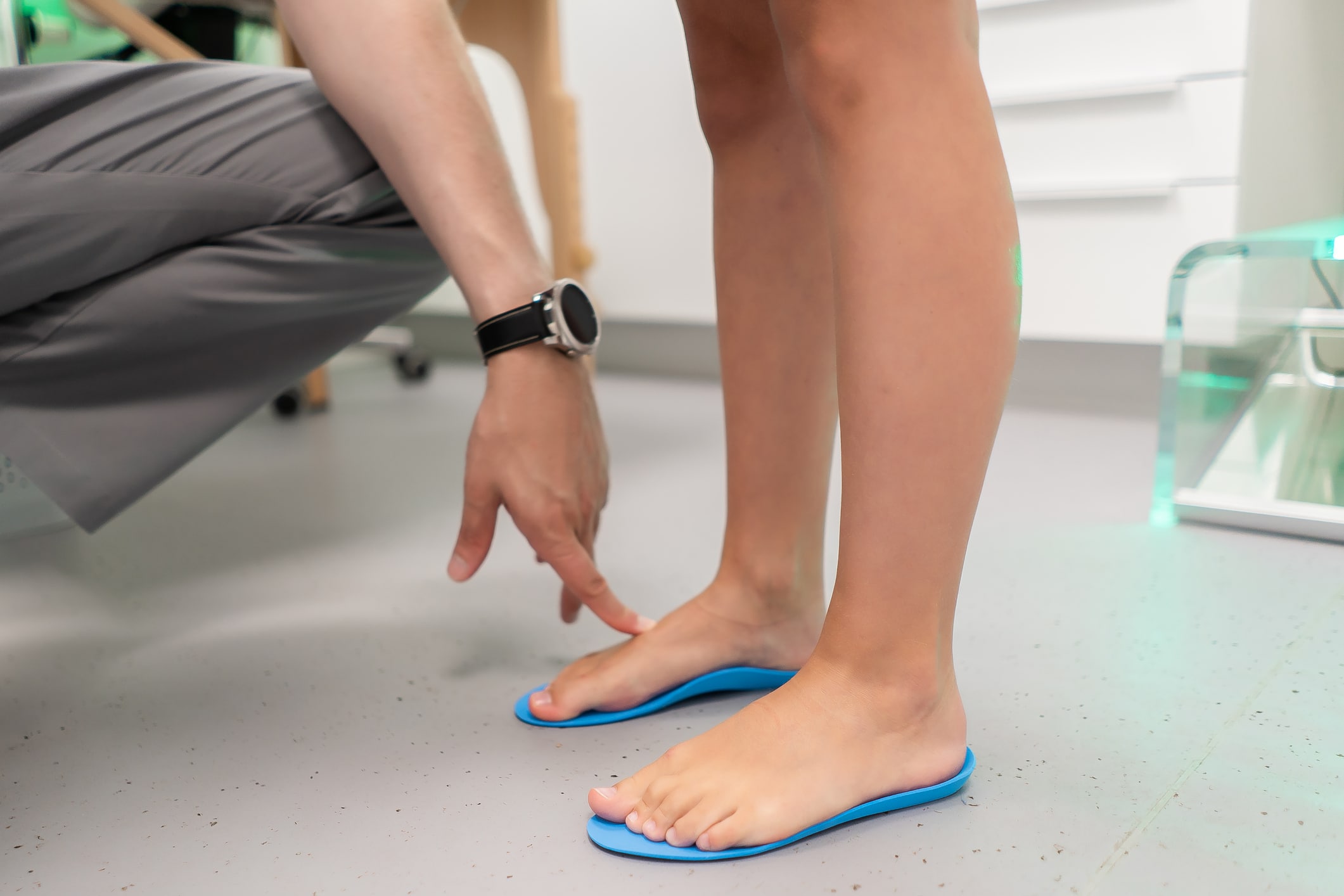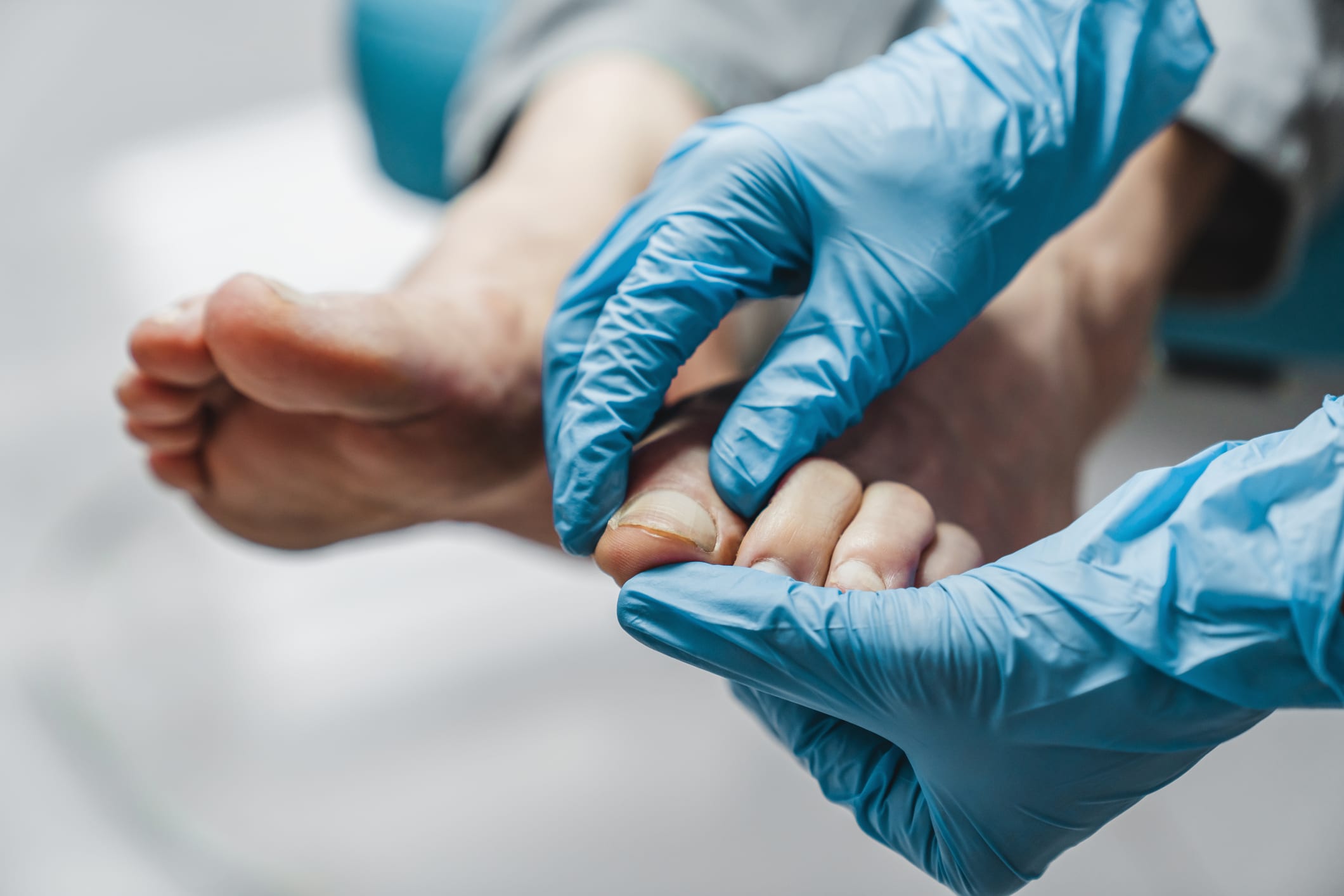People who struggle with diabetes already have a lot to deal with: blood sugar monitoring, healthy eating, exercise, appointments with doctors, and taking medications. A commonly overlooked addition to that list is daily check-ins with your body, particularly your feet.
Unfortunately, it’s common for people with diabetes to suffer from nerve damage in their feet and legs. When that nerve damage isn’t taken care of, it can cause serious health problems.
Nerve damage related to diabetes can potentially cause people to feel little to no pain. While this may sound like a good thing, lack of feeling when you get a cut or blister, can allow for larger problems down the road if left untreated.
Check Your Feet
At the very least, you should check your feet daily. This can be difficult if you are overweight or have limited flexibility. But, if you have a partner or caregiver, ask them for assistance.
Regular, daily foot care should include:
- Checking for redness, sores, blisters, cuts, or other issues. Mirrors are a great tool to use to see all sides and the bottom of your feet.
- Wash (but don’t soak) your feet daily in warm water. Feet should be dried thoroughly, and lotion applied to only the tops and bottoms of your feet. (Never apply lotion between your toes!)
- Always wear shoes, socks, or slippers to add a cushion to your steps and protect you from snags or extra rubbing.
- Wear well-fitting shoes. When you purchase new shoes, break them in slowly by wearing them for short periods during the first week.
- Trim toenails straight across and use a file to help avoid snagging.
- Don’t remove calluses or corns yourself. Have a doctor assist you.
- It’s essential to keep your blood flowing. When you sit, put your feet up as often as possible and wiggle your toes regularly.
- Choose activities that have a lower impact on your feet, like walking, swimming, or riding a bike.
Healthy foot management can seem like a lot to add to your already full plate of managing diabetes. But, the best way to handle it is to build tiny habits, one at a time, and practice those habits around the same time every day.
Symptoms
Even with excellent foot care, people with diabetes should be aware of potential problems. If you experience these symptoms, reach out to your doctor immediately.
Troublesome symptoms include:
- Pain in your legs or cramps in your backside, thighs, or calves during activity.
- Tingling, pain, or burning sensations in your feet or legs.
- A sudden inability to feel heat, cold, or touch.
- Structural changes in your feet.
- Continuous drying and cracking of the skin on your feet.
- A change in skin color.
- Toenails growing thick and turning yellow.
- Infections between your toes.
- Infected blisters, sores, ulcers, corns, or ingrown toenails.
Regular care, maintenance, and knowing trouble signs go a long way in helping relieve and prevent diabetic foot problems.
When people with diabetes don’t have good blood flow, like in peripheral vascular disease (PVD), it can cause sores and cuts to take longer to heal. If wounds do not heal, they can develop into infections or gangrene, which is tissue death due to lack of blood.
Treatment for PVD includes controlling symptoms and slowing or halting the progression of the disease. Instituting lifestyle changes like regular exercise, proper nutrition, eliminating smoking, lowering your blood pressure and cholesterol can help. Your doctor may prescribe medicines to improve blood flow and relax blood vessel walls. In severe cases, surgery may be required. Not taking action for PVD could lead to a higher risk of heart attack, stroke, and amputation.
People with PVD are three times more likely to have a stroke. Fortunately, testing is available to help assess our diabetic patient’s peripheral vascular health. We offer an in-house screening procedure called the Smart ABI, which can help our doctors track changes in your vascular health to help lessen the risk of complications related to PVD.
Diabetic Shoes Can Help
Diabetic shoes are designed to protect your feet and reduce the risk of developing problems. Anyone who suffers from nerve damage in their feet or legs can benefit from wearing diabetic shoes. However, getting the right kind of shoe and fit is vital to preventative care.
The general guideline is that diabetic shoes should be replaced every year. In fact, Medicare typically covers one pair each calendar year. But it’s essential to understand your personal use of the shoes. If you wear them every day and do a lot of walking, they will wear out faster than someone who doesn’t or who can’t walk as much. Knowing when to replace your shoes is essential, and not everyone will have the same wear and tear.
Foot shape and abnormalities in your feet can also cause shoes to wear out quicker. For example, if your feet overpronate, this can lead to extra pressure on a specific part of the shoe and cause that area to collapse and provide less relief.
If you’re unsure how the shape of your feet or your gait affects your shoes, you can hold them both up at eye level and look for signs of collapse or spots that are more worn out. You may notice consistent pressure points or parts of the shoes are collapsing more than other parts. In that case, you should speak to your doctor or specialist about adding inserts or finding a particular diabetic shoe for that problem.
Of course, if a shoe is ill-fitting or causes pain rather than relief, you should switch shoes immediately and speak to someone about which shoe is right for you. New shoes should be broken in by wearing them for just an hour or two a day for the first couple of days.
Treatment Options
Diabetic neuropathy and peripheral vascular disease are common diabetic foot conditions. People who suffer from diabetic neuropathy have damaged nerves in their legs and feet. This can cause them to not feel heat, cold, or pain. The lack of feeling is called “sensory diabetic neuropathy” and can cause you not to feel sores, blisters, or cuts on your feet. As we stated earlier, this can lead to the wound becoming infected and cause severe problems if it goes undetected and untreated.
Unfortunately, there is no cure for diabetic neuropathy. Instead, treatment is designed to slow the progression of the disease, relieve pain, and manage complications while restoring functions. Treatment includes consistent monitoring of your blood sugar to stay within the target range, keeping blood pressure under control, and maintaining a healthy weight and regular physical activity. Pain can make regular activity and exercise difficult, which is why finding an excellent diabetic shoe can help.
We also offer treatment options to help lessen pain. Our MLS laser therapy program helps many patients maintain an active lifestyle while relieving pain. We went into more depth about the program here.
We Can Help
Diabetic foot pain is a serious condition. Finding advice on which shoes or custom orthotics are right for you can be difficult. We’re here to help.
We can provide expert recommendations to help you treat diabetic foot and leg issues. We evaluate each patient on a case-by-case basis and will recommend treatment that’s best for our patients.
If you have not had a yearly diabetic foot exam, are experiencing pain or discomfort, or are worried about future pain and discomfort, we can help set up a diabetic foot care plan that’s right for you. Our staff would be happy to answer any questions you have about diabetic foot care, shoes, screening, or any treatment options discussed. Schedule an appointment at Lakes Foot and Ankle Associates by calling our office or by filling out our online contact form.
| Monday | 8:30am – 5:00pm |
| Tuesday | 9:00am – 5:00pm |
| Wednesday | 8:30am – 5:00pm |
| Thursday | 9:00am – 6:00pm |
| Friday | 7:30 am – 4:00pm |
| Saturday | – Closed – |
| Sunday | – Closed – |



